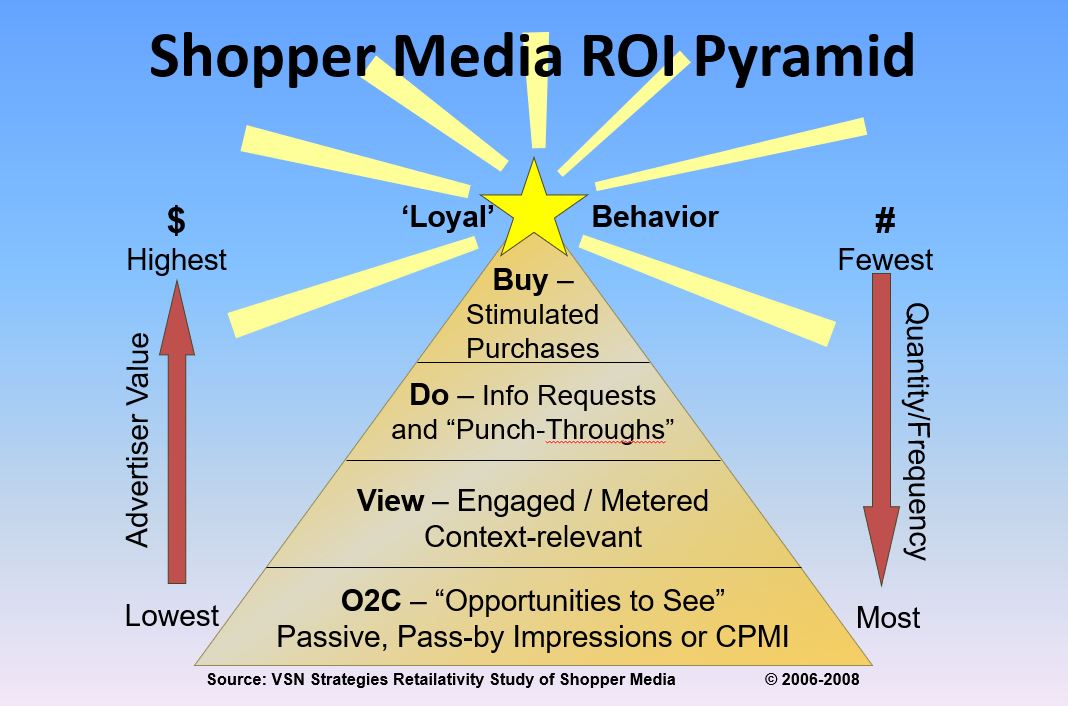
TWO RECENT NEWS ITEMS about retail giants, radio-frequency ID tags and promotional displays have pundits punning and some market vultures vultching:
When Procter & Gamble declared it would no longer apply EPC/RFID tags to promotional displays built for Walmart stores, it triggered critiques of the technology and its underlying economics. Observers circling above the decaying carcass of the program sniffed that just maybe, Walmart wasn’t delivering a measurable benefit from the solution.
Within days Walgreen Drug Stores delivered a more positive spin, stating that the very same sort of radio-frequency tags had helped it improve its in‐store execution in the past year “to nearly double the industry average.”
Never mind that the industry average stinks like carrion.
David Van Howe, vice president of purchasing for Walgreens, called the information captured from the tagged displays a “game changer” for the chain, and at least one partner, Revlon, said the program delivered “unprecedented insight into what works and what doesn’t with consumers.”
So what are we to take away from all this? The vultures in our midst keep trying to declare retail RFID dead on arrival. The tech pundits claim they have seen a glorious future in those tiny transponders. I say the misdirected focus on RFID technology threatens to derail an important initiative.
It’s not the tech, it’s the practice! RFID has been ascribed with magical status by some, but I’m here to tell you – it’s no tri-corder, not even a silver bullet.
When it comes to at-retail compliance – potentially the largest business improvement opportunity presently facing the retail consumer products industry – point solutions are pointless. The system of practices is everything.
P&G’s decision exemplifies the frustration held by many manufacturers with In-Store Implementation of promotions. There is no routine, repeatable, measured and collaborative practice to execute planned promotions in stores. Data on compliance, if available at all, arrives weeks or months after the fact and it reveals that roughly half the spending is ineffective.
Even the mighty Walmart, it seems, has so far been unable to master this challenge on behalf of its trading partners. It means that billions of dollars in trade and promotional funds are badly spent while we debate which brand of ID code to attach to the display headers.
When it comes to optimizing In-Store Implementation, grease pencils and clipboards may be plenty of tech if the process is right. The retailer that formulates a compliance plan, enables it with appropriate solutions, and measures its outcome relentlessly will always achieve better performance on in-store programs. This is equally true for off-shelf display compliance, resets, planogram maintenance, new-product cut-ins, sampling programs, or floor polishing.
Of course large chains like the two Wals require some tools to help manage scale and stabilize best practices. For fixtures and displays, RFID may in fact be a useful input to the process. But it works at Walgreens because it has also instituted the in-store practices to make it work.
For the past two years, the In-Store Implementation Network has advocated establishment of a fully collaborative “plan-do-measure” retail compliance discipline that would ensure real-time visibility and accountability. We cannot improve what we do not measure. Retailers – and that includes even the likes of Walmart and Walgreens – must step forward on this issue if we are to see real progress on retail effectiveness and shopper experience.





